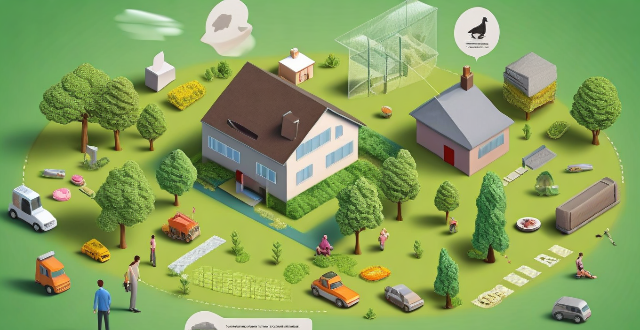The article discusses the key components of environmental legislation, which are designed to protect the environment and promote sustainable development. These include Environmental Impact Assessment (EIA), Pollution Control Laws, Conservation Laws, and Sustainable Development Policies. The EIA process involves screening, scoping, reporting, review, and monitoring to identify and mitigate potential adverse impacts of proposed projects on the environment. Pollution control laws regulate emissions and discharges into air, water, and land to prevent pollution and protect public health and the environment through emission standards, discharge permits, and waste management regulations. Conservation laws aim to protect endangered species, habitats, and ecosystems from destruction or degradation caused by human activities through protected areas, species protection, and habitat restoration measures. Sustainable development policies focus on balancing economic growth with social equity and environmental protection to meet present needs without compromising future generations' ability to meet their own needs through integrated planning, resource efficiency, and fostering a green economy. Overall, environmental legislation plays a crucial role in protecting our planet's natural resources and ensuring sustainable development for future generations.

Key Components of Environmental Legislation
Introduction
Environmental legislation is a set of laws and regulations designed to protect the environment and promote sustainable development. It aims to regulate human activities that may harm the environment and ensure that natural resources are used in a responsible and sustainable manner. In this article, we will discuss the key components of environmental legislation.
1. Environmental Impact Assessment (EIA)
Purpose
The purpose of an EIA is to identify, evaluate, and mitigate the potential adverse impacts of proposed projects on the environment before they are implemented.
Process
- Screening: Determine if a project requires an EIA based on its potential impact.
- Scoping: Identify the significant issues and factors to be addressed in the EIA.
- Reporting: Prepare a detailed report on the potential impacts and proposed mitigation measures.
- Review: The report is reviewed by relevant authorities and stakeholders for approval or further modifications.
- Monitoring: After project implementation, monitor the actual impacts and compare them with the predicted ones.
2. Pollution Control Laws
Objectives
Pollution control laws aim to regulate emissions and discharges into air, water, and land to prevent pollution and protect public health and the environment.
Regulations
- Emission Standards: Set limits on pollutant concentrations or total amounts released into the environment.
- Discharge Permits: Issue permits specifying allowable pollutant levels and conditions for discharging waste into water bodies.
- Waste Management: Regulate the handling, storage, transportation, and disposal of hazardous waste.
3. Conservation Laws
Goals
Conservation laws aim to protect endangered species, habitats, and ecosystems from destruction or degradation caused by human activities.
Measures
- Protected Areas: Designate areas as national parks, wildlife sanctuaries, or nature reserves where certain activities are restricted or prohibited.
- Species Protection: List endangered species under various categories (e.g., critically endangered, endangered) and impose strict regulations on their trade, hunting, or harvesting.
- Habitat Restoration: Restore degraded habitats through reforestation, wetland restoration, or other means to support biodiversity conservation.
4. Sustainable Development Policies
Aims
Sustainable development policies focus on balancing economic growth with social equity and environmental protection to meet present needs without compromising future generations' ability to meet their own needs.
Strategies
- Integrated Planning: Encourage integrated planning across sectors (e.g., energy, transport, agriculture) to minimize negative environmental impacts while promoting economic growth.
- Resource Efficiency: Promote resource efficiency in production and consumption patterns through recycling, waste reduction, and energy conservation initiatives.
- Green Economy: Foster a green economy by investing in renewable energy sources, green technologies, and eco-friendly products and services.
Conclusion
Environmental legislation plays a crucial role in protecting our planet's natural resources and ensuring sustainable development for future generations. By implementing effective EIAs, pollution control laws, conservation measures, and sustainable development policies, we can work towards creating a more equitable and resilient world for all living beings.